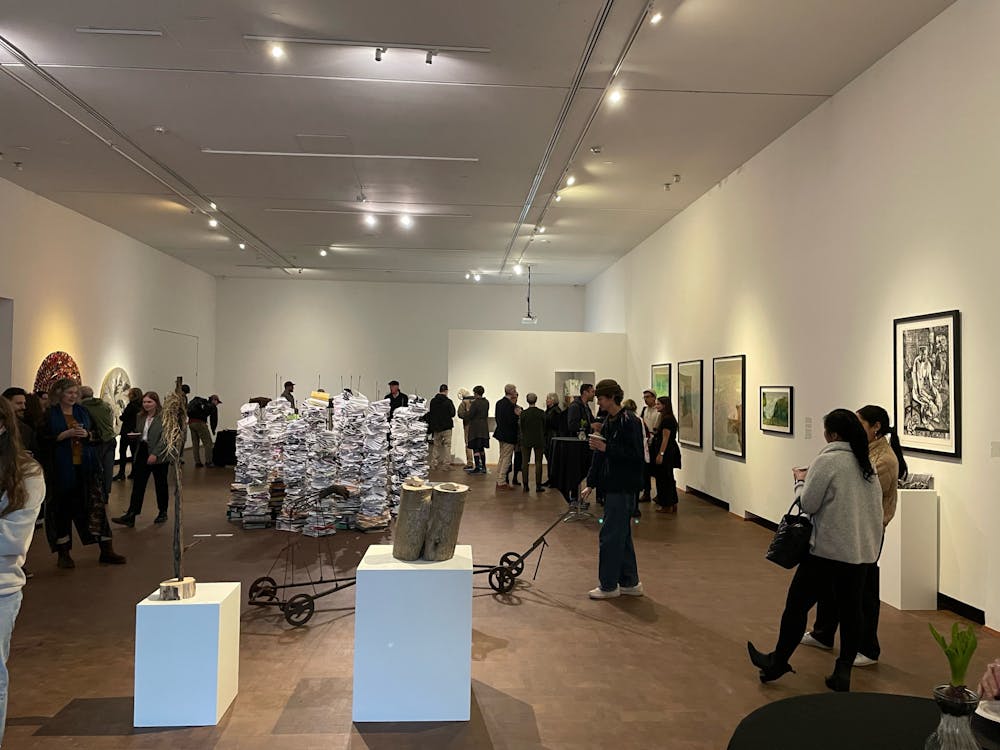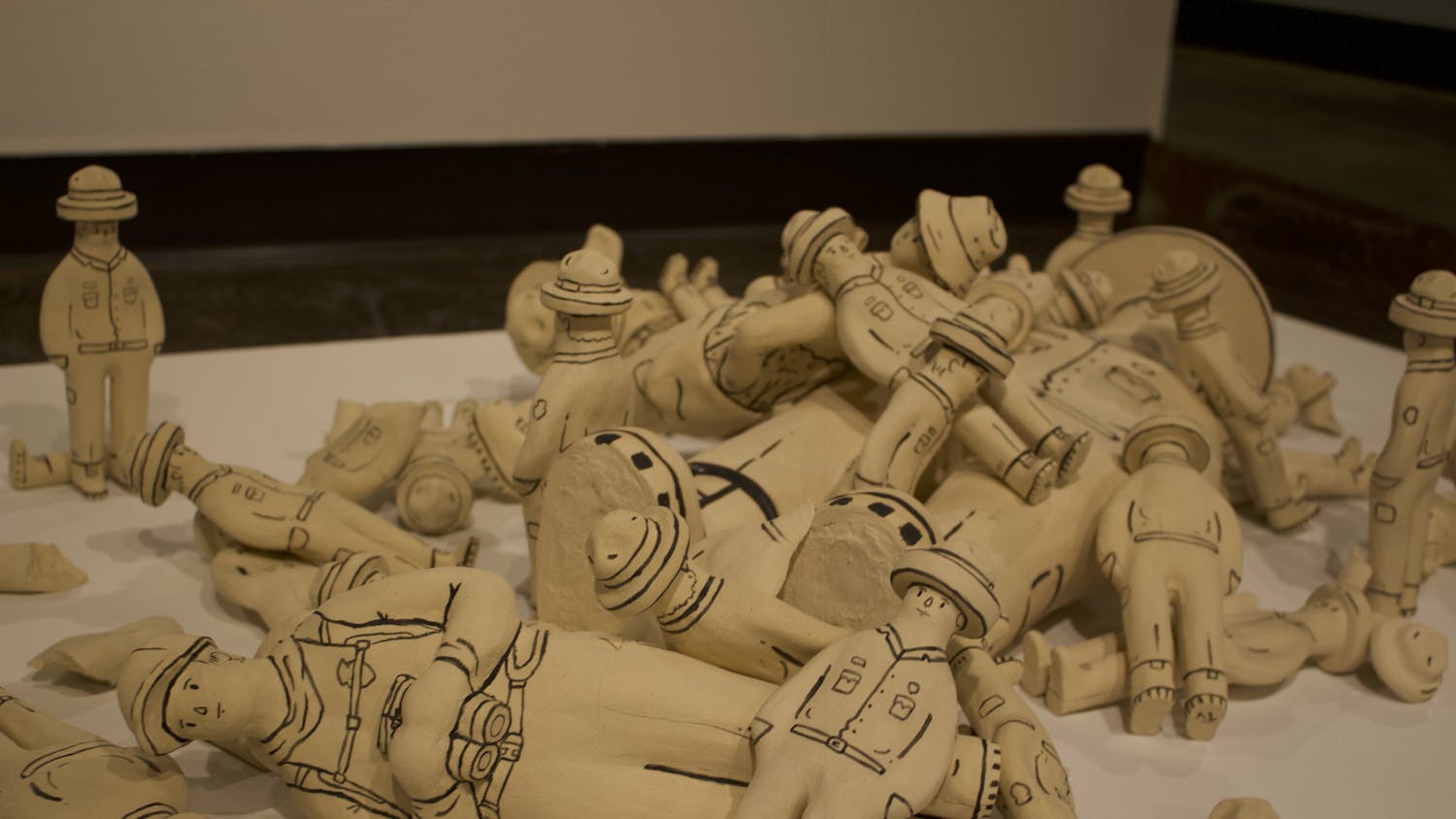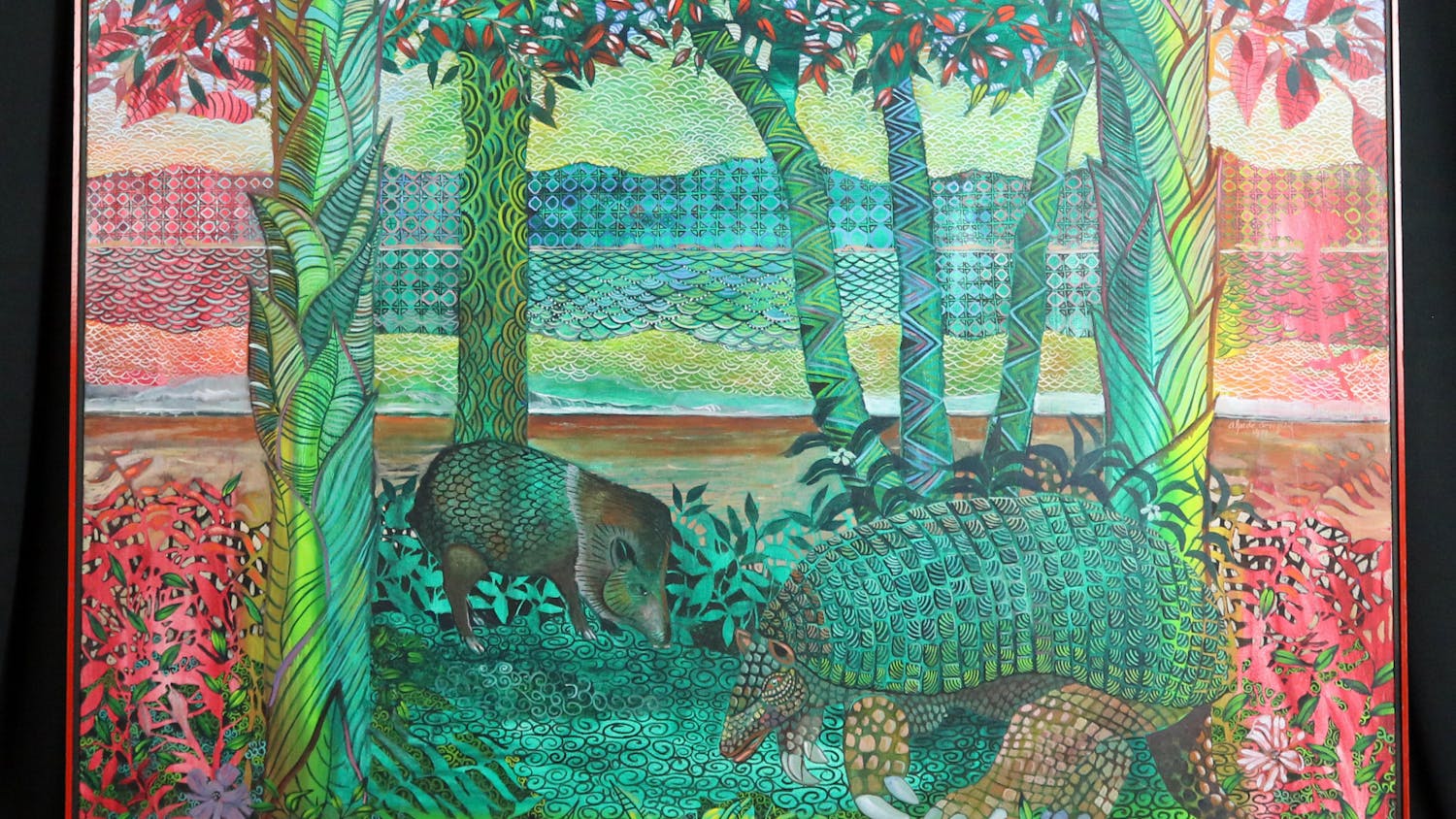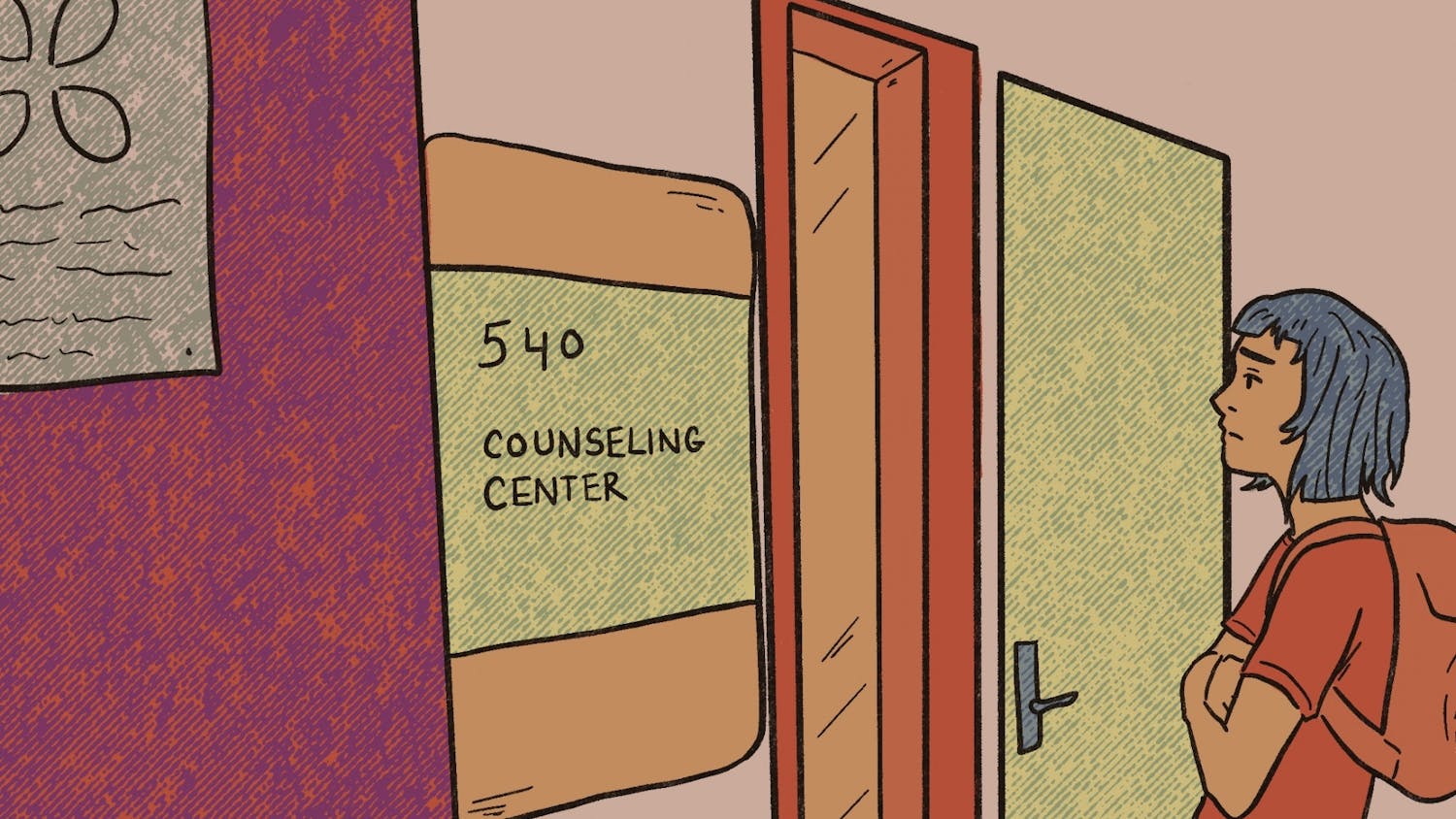Two exhibitions, “Pareidolia” and “Teacher/Scholar/Artist,” will run concurrently until May 6 at the Western Gallery, located on Western Washington University’s campus. This is the first showing of “Pareidolia,” while “Teacher/Scholar/Artist” is the most recent of the biennial exhibitions that showcase Western faculty art.
A goal of the “Pareidolia” exhibition, a collaboration between Professor Emeritus Barbara Miller and artist Dimitri Katsaros, is to inspire audiences to be conscientious of and caring towards their surrounding environment. For instance, the artists’ piece “Strait and Sound – 14 Rivers” shows the many waterways that flow from the Salish Sea into the Pacific Northwest’s straits and sounds. These waterways, which are integral to local ecosystems and weather control, are threatened by human development.
Pareidolia is the phenomenon of finding patterns in chaos, but it takes on another meaning in Miller and Katsaros’ work.
“It is a metaphor for our artistic practice, which involves searching for patterns and connections in the interplay between light and dark,” Miller and Katsaros said in their artists’ statement.
One piece in “Pareidolia,” “Lunacy,” shows full moons across all 12 months of the calendar year. Outside of a lunar eclipse depicted farthest to the left in the composition, the moon appears unchanged across the photographs.
To make “Lunacy,” the pair mapped out and traveled to locations across the West Coast, where the sky was clear enough for photos of the moon.
“I try to make it a point to go out and look at the [night] sky. And it always looks the same. It’s just the moon. But the moon is always beautiful. And I feel like you can really see that with this exhibit,” said Charlie Muroya, a first-year transfer student and performing arts major at Western.
The pieces in “Pareidolia” reflect that humans on Earth are a part of the sky and the bigger environment, said Miller.
Creating the works in “Pareidolia” posed new challenges for artists Miller and Katsaros. One image from “Bio Patterns” is composed of 300 pictures, which took around a month for Katsaros to stitch together.
“For me, it was about learning, it wasn’t about teaching. If I could learn and I could relay that in my courses, they were successful. That type of engagement [was about] learning as a group,” said Miller, who taught at Western for 22 years.
“Barbara, as a faculty member, was instrumental in teaching contemporary subjects and theory in art history and really [prepared] students to apply theory to art practices,” said Zoë Fejeran, the museum educator at the gallery.
In “Teacher/Scholar/Artist,” faculty members explore themes around the COVID-19 pandemic, the removal of confederate effigies in the South, the representation of endless materials – papers, binders, and folders – from years of teaching at Western and much more.
As the title suggests, many know art department faculty as teachers or scholars first. But this exhibition is a “chance to see the types of artwork that [faculty] create on their own time. You see a different side of someone,” said Fejeran.
Some experts say there is a misconception about faculty art.
“The works completed by art department faculty do not usually get thought of by the general public as the end product of ‘research’ the way work does in the STEM disciplines. But the art created by university faculty results from practice, labor, trial-and-error and true research,” said Paul Manoguerra, the director of Gonzaga’s Jundt Art Museum, via email.
Many students say they have found connections with art pieces in the exhibitions. One piece in Teacher/Scholar/Artist, “Casa Fantasma, (Ghost House)” by Dana Ollestad, is a point-of-view video of the artist looking through the contents of his partner's maternal grandparents’ home. After their grandparents had passed away, their belongings remained.
“My grandparents are also getting older and they’re sick as well. So, it’s hard seeing [the video] and knowing that time just keeps going,” said Esteban Valladares, a fifth-year Western student and front desk attendant in the gallery. “Treasure the ones closest to you.”
The gallery will be holding lunchtime artist talks, which are open to the public and free of charge, from now until April 27.
“Through artworks, people are able to communicate parts of themselves, or confront issues or problems that they might not be able to do in other ways,” said Fejeran.
In “Teacher/Scholar/Artist” and “Pareidolia,” the faculty – the artists – communicate another side of themselves not normally seen.
Eli Voorhies (he/him) is the opinions editor this quarter. Previously, he was a city life reporter and editor. In his free time, he climbs, photographs and spends more time messing around than working at Legendary Vinyl Records. You can reach him at eliv.thefront@gmail.com.






